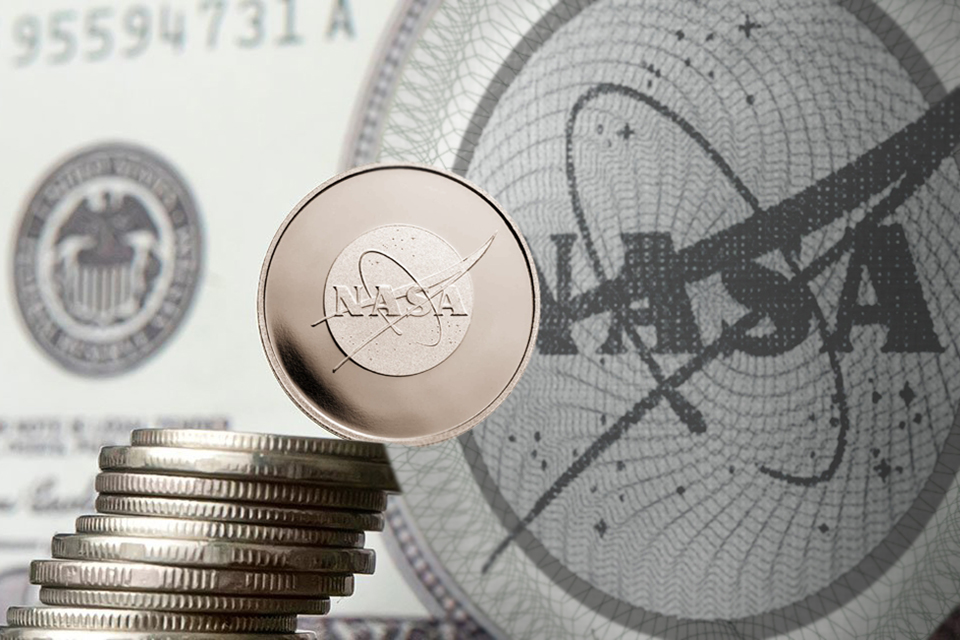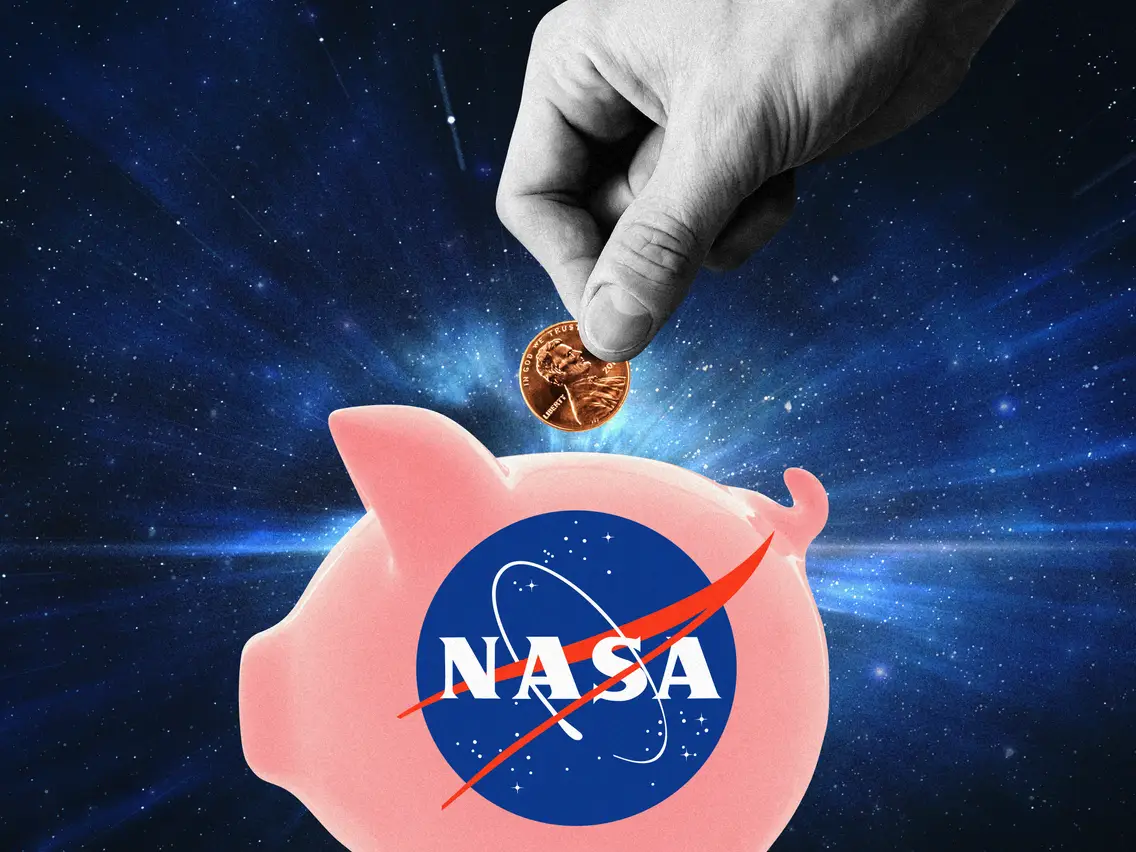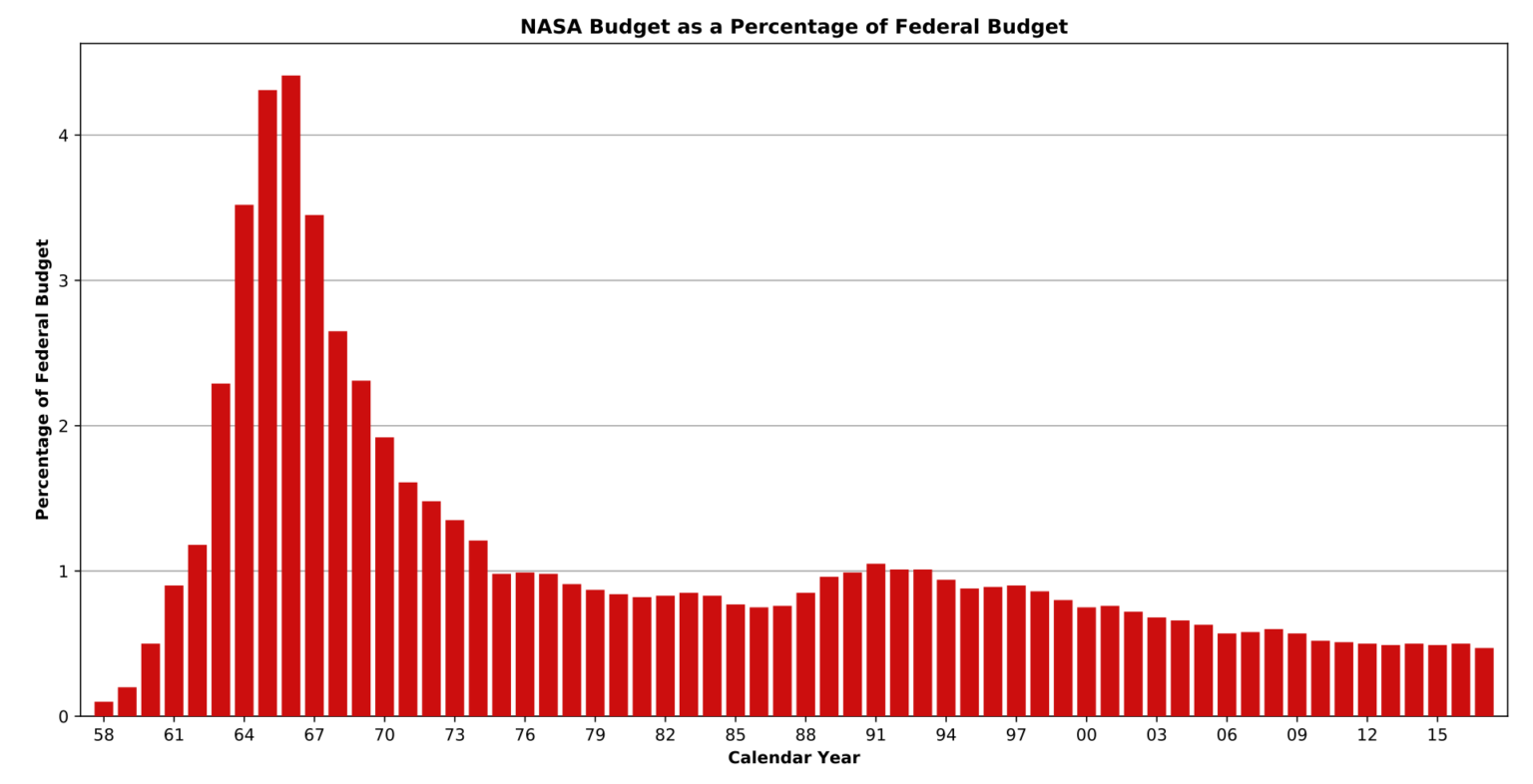On July 29, 1958, Dwight D. Eisenhower signed the National Aeronautics and Space Act, which established an organization responsible for all activities related to space exploration, except those concerning national security. This organization was named NASA (National Aeronautics and Space Administration) and began its operations on October 11, 1958.

Over those 65 years, NASA has become one of the most well-known and popular organizations, not only in the United States but worldwide. It is hard to find someone who has not heard something about NASA’s activities and achievements.
However, there are many myths and misconceptions about NASA, one of which is that the organization has a truly “astronomical” budget that allows it to do whatever it wants. Unfortunately, the reality is quite different.
How NASA’s Budget Is Formed
Let’s start with how NASA’s budget is formed. At the beginning of each year, the current U.S. administration publishes the so-called budget request, which proposes the structure of government spending for the upcoming fiscal year, including the expenses to support NASA’s activities.

However, the budget request is just the first step. It is merely a general recommendation because it is the Congress, not the White House, who performs allocating funds in the United States. After receiving the budget request, various committees in the House of Representatives and the Senate review the document and decide whether to support the White House’s proposal or modify the allocation of funds for certain items of expenditure. This can involve increasing or decreasing the funds. Additionally, lawmakers may make their own proposals and allocate funds for items not included in the initial request.
Throughout NASA’s history, there have been situations where Congress “rescued” space projects that the White House did not want to fund. An example of this is the Roman space telescope. On the other hand, Congress can also cut funding for any space program due to its cost. This almost happened to the ISS. In 1993, the House of Representatives voted on the future funding of the station. 216 congressmen supported its continuation, while 215 voted to terminate it. Thus, the fate of the ISS was determined by a single vote.
All of the above is usually accompanied by active debates between representatives of the Democratic and Republican parties. Lobbying by various companies and individual states in the U.S. also plays a significant role in making funding decisions, as everybody strives to secure funds for projects beneficial to them. Ultimately, the House of Representatives and the Senate prepare their own versions of the budget. These versions are then combined into a single bill for voting. If approved, the bill is sent to the president for signature.
In theory, if the U.S. president disagrees with the bill, he or she can veto it. However, the veto can be overridden by Congress. Therefore, the procedure for approving NASA’s budget often takes a considerable amount of time.
NASA’s Actual Budget
Now, let’s talk about NASA’s actual budget. In 2023, it amounted to $25.4 billion. This is less than 0.5% of the entire U.S. federal budget. For comparison, defense spending amounted to $816.7 billion. So, for every dollar NASA receives, the Pentagon gets $32.

So how much money does NASA have at its disposal? In 2023, its budget amounted to 25.4 billion dollars. That is less than 0.5% of all the expenses in the U.S. budget. For comparison, defense spending reached 816.7 billion dollars. So for every dollar allocated to NASA, the Pentagon received 32 dollars.
Of course, such a comparison may not seem entirely fair. Recent events have clearly demonstrated the importance of investing in national security. However, the fact remains that in the context of the U.S. budget, NASA’s funding seems meager.
Budget Reductions for NASA
When discussing NASA’s budget, it is essential to mention another trend: over the past half-century, the percentage of funds NASA receives relative to the U.S. federal budget has steadily decreased. Only once in history, during the height of the Moon race when the U.S. was trying to outpace the Soviet Union and be the first to land humans on the Moon, did NASA receive significant funding. This occurred in 1966 when NASA received 4.4% of the federal budget.

Since then, funding for the organization has consistently decreased. By 1972, it had dropped to 1.48% of the federal budget, and by 1994, it was less than 1%. Since 2010, NASA has never received more than 0.5% of the federal budget. And it seems this trend is unlikely to change in the coming years.
It is precisely the situation of constantly diminishing funding that has led NASA in recent years to make a strong emphasis on involving private companies in space exploration. They can undertake many traditional functions of the organization for lower costs and sometimes even more efficiently.
So, if you ever hear or read that NASA receives substantial funds, know that it is not even an exaggeration. It is simply not true. While NASA is a government organization and, like any such entity, may not always efficiently utilize its funds due to bureaucracy, it never benefits from astronomical funding. Considering the scale of projects and research conducted by NASA, one can only marvel at its significant achievements with the far-from-unlimited financial resources available to it.

